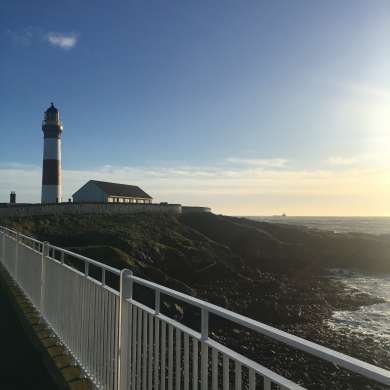The world needs more renewable power to limit climate change. According to the UN Intergovernmental Panel on Climate Change, emissions of greenhouse gases must be halved by 2030 if we are to avoid global warming of more than two degrees. To achieve this, fossil energy such as coal must be replaced by renewable energy such as solar, wind and hydropower.
By utilising surplus power from Scottish wind farms, and using Norwegian reservoirs as an enormous ‘green battery’, NorthConnect makes it possible to expand the use of wind and hydro power to replace fossil energy. UK authorities estimate that NorthConnect facilitates cutting greenhouse gas emissions by about 2 million tonnes of CO2. That’s around the same emissions as a million passenger cars.
It's urgent. The world has twelve years to halve emissions to stop global warming before it reaches 1.5 degrees, states the UN Intergovernmental Panel on Climate Change.
If we are to succeed, the energy system must change dramatically. Today, the use of fossil energy in transport, heating and power generation accounts for 75 per cent of climate emissions in Europe. This must be reduced. Fossil energy must be greatly reduced and replaced with renewable energy. The goal is that by 2050, all power production in the EU will be emission-free.
The climate challenges have led to a large-scale development of renewable power such as wind and solar power worldwide. The challenge is that wind and solar power are immediate sources and cannot be easily stored. Hydropower, however, which Norway has large amounts of, is unique because energy can be stored in large water reservoirs. The energy can be quickly turned on and off when needed. Hydropower in a renewable energy market is therefore extremely useful and valuable.
For wind and solar power to be able to account for an ever-increasing part of total energy production, power systems must be built that connect renewable energy from wind, sun and water together across national borders. Then hydropower can act as a balancing power and provide clean and stable energy supply when the wind reduces or the clouds cover the sun.
To achieve this, we need to build land-based power connections so that green, renewable energy can be exchanged and used as effectively as possible. Connections that link renewable power systems between countries are among the most important investments we can make to stimulate increased use of renewable energy. Such power connections are infrastructure for the low-emission society.
NorthConnect is one such power connection. NorthConnect will transport clean, renewable windpower via Peterhead in Scotland to Sima in Hardanger - and renewable hydropower back to Scotland. The Norwegian water reservoirs can be compared to giant batteries: in the reservoirs, water is stored which can be converted into power almost instantly. When it is windless in Scotland, this power cable will be able to send hydropower to the UK. In this way, clean hydropower will replace dirty coal power.


